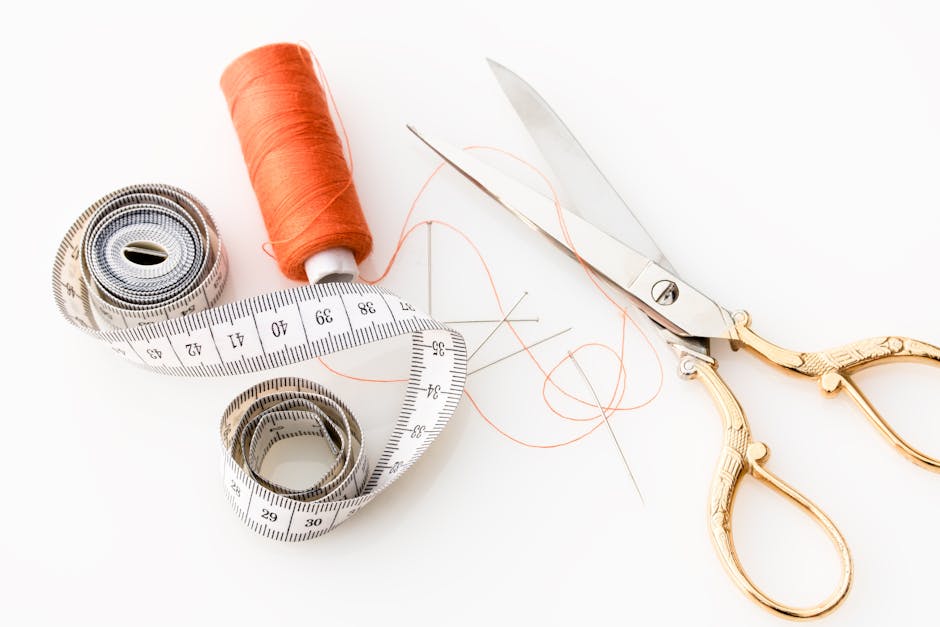How to Use Trauma Shears: A Quick Guide for Beginners
Trauma shears are an essential tool for medical, emergency, and tactical professionals. They are specially designed scissors used to cut through tough materials such as clothing, seat belts, and even thin metal. The primary purpose of trauma shears is to allow first responders to quickly and efficiently access injuries and deliver critical care without delay.
**ONE SHEAR®** offers high-quality trauma shears that are engineered for precision, durability, and performance. These shears are trusted by nurses, EMTs, law enforcement, and military personnel for their reliability in life-saving situations. Our trauma shears are designed to make clean cuts, ensuring that first responders can perform their duties without unnecessary complications.
Whether you are a beginner or a seasoned professional, understanding how to use trauma shears effectively is crucial. This guide will provide you with the essential techniques and tips to ensure that you can use trauma shears safely and efficiently in any situation.
For more detailed information and to explore our range of premium trauma shears, visit our website.
Understanding Trauma Shears Anatomy

To effectively use trauma shears, it is essential to understand their anatomy. Trauma shears are composed of several key components, each designed to enhance their functionality and performance in critical situations:
- Blades: The blades are the cutting edges of the shears. Typically made from stainless steel, they are sharp and durable, allowing them to cut through various tough materials with ease.
- Serrated Edge: One of the blades usually has a serrated edge. This feature helps grip the material being cut, preventing it from slipping and ensuring a clean cut.
- Blunt Tip: The blunt tip of trauma shears is a critical safety feature. It helps prevent accidental injury to the patient or the responder by avoiding punctures or cuts when the shears are in use.
- Handles: The handles are ergonomically designed for comfort and control. They are often made of durable plastic or metal and may include a non-slip grip to ensure they can be used effectively even in wet or stressful conditions.
- Pivot Point: The pivot point is the joint where the two blades meet and move. A strong pivot point ensures smooth operation and consistent cutting performance.
Understanding these components will help you appreciate how trauma shears are designed to function efficiently in emergency situations. Familiarity with the anatomy of trauma shears will also enable you to use them correctly, ensuring that you can rely on them when every second counts.
Step-by-Step Guide for Using Trauma Shears

Using trauma shears effectively requires knowing the correct steps to ensure both safety and efficiency. Here is a step-by-step guide to help you master the use of trauma shears:
- Prepare the Shears: Before using your trauma shears, ensure they are clean and in good working condition. Check the blades for sharpness and the handles for any signs of damage.
- Position the Patient: Ensure the patient is positioned comfortably and securely. This will help prevent any movement that might complicate the cutting process.
- Identify the Material: Determine the material you need to cut, whether it's clothing, bandages, or other obstructions. Make sure the material is taut to facilitate a clean cut.
- Insert the Shears: Carefully slide the blunt tip of the shears under the material to avoid causing injury to the patient. The blunt tip is designed to lift the material away from the skin.
- Start Cutting: Begin cutting with a firm and steady motion. Use the serrated edge of the blade to grip the material, ensuring it doesn't slip. If the material is particularly tough, you may need to use both hands for additional leverage.
- Finish the Cut: Continue cutting until the material is fully severed. Always keep the blunt tip angled away from the patient to avoid accidental injury.
- Inspect the Patient: After cutting, check the patient for any signs of distress or injury that may have occurred during the process. Provide any necessary follow-up care immediately.
By following these steps, you can use trauma shears efficiently and safely, ensuring you provide the best possible care in emergency situations. Remember, practice makes perfect, so take the time to familiarize yourself with your shears and practice these steps regularly.
Safety Tips for Using Trauma Shears

When using trauma shears, safety is paramount to ensure both the patient and the user remain unharmed. Here are some essential safety tips to keep in mind:
- Use the Blunt Tip: Trauma shears are designed with a blunt tip to prevent injury. Always use the blunt tip to lift materials away from the skin before cutting. This minimizes the risk of accidentally cutting the patient.
- Maintain Sharp Blades: Dull blades can lead to inefficient cutting and require more force, increasing the risk of slipping and causing injury. Regularly inspect and sharpen the blades to keep them in optimal condition.
- Secure the Area: Ensure the patient and the area around them are stable and secure. Movement can complicate the cutting process and increase the risk of accidental injury.
- Wear Protective Gear: Always wear appropriate protective gear, such as gloves, to protect yourself from potential contamination and to improve your grip on the shears.
- Be Mindful of Other Equipment: Be aware of any medical devices or equipment attached to the patient. Avoid cutting near or around these devices to prevent accidental damage.
- Handle with Care: Trauma shears are designed to cut through tough materials, so handle them with care. Avoid using excessive force, and always cut with a controlled, steady motion.
- Store Properly: When not in use, store the trauma shears in a safe place. This not only prolongs their lifespan but also prevents accidental injuries caused by mishandling or improper storage.
By adhering to these safety tips, you can effectively use trauma shears while minimizing the risk of injury. Keeping safety in mind ensures that you can provide quick and efficient care in emergency situations.
Common Mistakes to Avoid with Trauma Shears

Using trauma shears effectively requires not only understanding the proper techniques but also being aware of common mistakes that could compromise their efficiency and safety. Here are some pitfalls to avoid:
- Using Dull Blades: One of the most frequent mistakes is using trauma shears with dull blades. This not only makes cutting more difficult but also increases the risk of slipping and causing injury. Regularly check the sharpness of your blades and maintain them as needed.
- Incorrect Cutting Angle: Cutting at the wrong angle can make the process inefficient and potentially damaging. Always cut at a consistent, proper angle to ensure clean and precise cuts.
- Forcing the Cut: Applying excessive force can damage the shears and increase the risk of injury. Trauma shears are designed to cut through tough materials with minimal effort, so if you're forcing the cut, you may need to reassess your technique or the condition of the blades.
- Neglecting Blade Maintenance: Failing to clean and maintain the blades can lead to rust and decreased performance. Always clean your trauma shears after use and ensure they are dry before storing them.
- Improper Storage: Storing trauma shears in an unsafe or inappropriate manner can lead to damage and accidental injuries. Always store them in a designated, secure location.
- Ignoring Safety Protocols: Skipping safety protocols, such as not lifting the material away from the skin with the blunt tip, can result in accidental cuts and other injuries. Always follow recommended safety practices.
- Cutting Unsuitable Materials: Trauma shears are designed for specific uses, predominantly in medical settings. Using them to cut materials they are not designed for can dull the blades and reduce their effectiveness.
Avoiding these common mistakes will help you maintain the effectiveness and longevity of your trauma shears, ensuring that they are always ready for critical moments when you need them the most.
Maintaining and Cleaning Your Trauma Shears
Proper maintenance and cleaning of your trauma shears are essential to ensure their longevity and optimal performance. Here are some best practices to keep your shears in top condition:
- Regular Cleaning: After each use, clean your trauma shears thoroughly with soap and water. This will remove any residue or contaminants that could cause rust or corrosion. For a more thorough clean, consider using a mild disinfectant.
- Drying: It is crucial to dry your shears completely before storing them. Moisture can lead to rust, which can significantly impair the functionality of the blades. Use a soft cloth to dry them, paying special attention to the hinges and joints.
- Lubrication: Periodically apply a light oil or lubricant to the pivot point of your shears. This will ensure smooth operation and reduce wear and tear on the moving parts.
- Sharpening: Over time, the blades of trauma shears can become dull. Use a sharpening tool specifically designed for shears to maintain a sharp edge. Regular sharpening will ensure that your shears cut efficiently and effectively.
- Proper Storage: Store your trauma shears in a clean, dry environment. Consider using a protective sheath or case to prevent accidental damage and to keep them secure when not in use.
- Inspection: Regularly inspect your trauma shears for signs of damage or wear. Check for loose screws, damaged blades, or other issues that could affect performance. Address any problems promptly to prevent further damage.
By following these maintenance and cleaning tips, you can ensure that your trauma shears remain reliable and effective when you need them most. Remember, the better you care for your tools, the better they will perform in critical situations.
To learn more about maintaining and choosing the best trauma shears, visit our website at www.oneshear.com.





